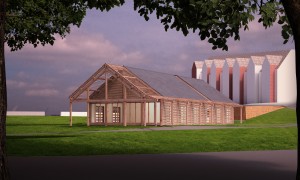New Homes Bonus could fund Community Centre
Newtown Community Association (NCA) could soon have a new building due to funding soon to be released through the New Homes bonus.
The Community Association based in Belmont Park in Exeter has been drawing up plans for a new facility, which will be an exemplar of sustainable passive technology and provide the local community with a much needed updated facility for local clubs and groups to meet.
The NCA have been working with Exeter based Living Space Architects to create a Vision for the scheme which will shortly be submitted for planning permission.
Kirsty Curnow director of Living Space Architects said: “We have been working hard with the community to create a building that meets their needs and uses as little energy as possible and the NCA are delighted that the council may be able to provide some of the funding that is required to make the scheme viable”
Background
The New Homes Bonus is based on past increases in housing supply. It is a powerful and simple incentive for housing growth, because it ensures that those areas which are growing have the resources to meet the needs of their new residents and existing communities. Local authorities are best placed to understand these needs and lead the debate about spending priorities. Wychavon have developed a protocol, whereby up to 40 per cent of the funding is spent by the community where the growth is taking place. While Dacorum are reinvesting the Bonus in further housing and business growth
The Department has set aside almost £1bn over the Comprehensive Spending Review period for the scheme, including nearly £200m in 2011-12 in year 1 and £250m for each of the following three years. Funding beyond those levels will come from formula grant. This ensures that the economic benefits of growth are returned to the local level .
See related press notice and written ministerial statement in top right hand corner of this page.
The New Homes Bonus: final scheme design was published on 17 February 2011 (see Related Publications below).
Further information
For further information contact Kirsty Curnow Bayley at Living Space Architects www.livingspacearchitects.com

